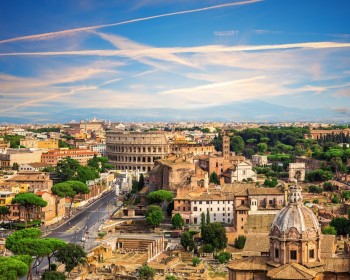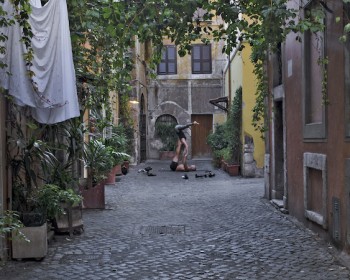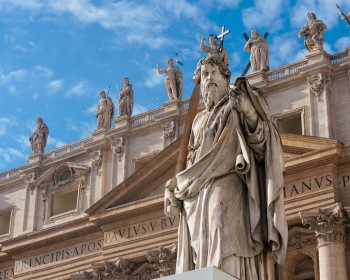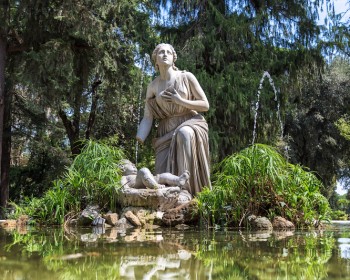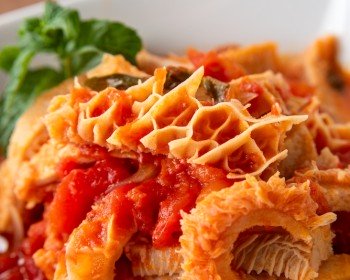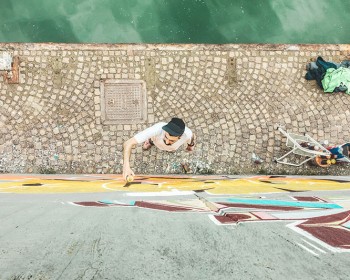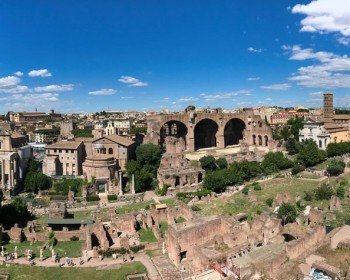When you think of Rome many things may come to mind. You are bound to be reminded of tales of gladiators, emperors and the Ancient Romans. Your mind's eye may linger on images of Baroque squares and fountains. One thing you almost certainly won’t associated with the Eternal City is the early 20th Century artistic movement of Cubism.Widely considered to have been born in Paris, Cubism was pioneered by Georges Braque and, more famously, Pablo Picasso. Have you always been a fan of the slightly bizarre works of Pablo Picasso? Then there has never been a better time to visit Rome. From 22 September- 21 January the Scuderie del Quirinale in Rome will host an exhibition entitled ‘Picasso - From Cubism to Classicism: 1915-1925’.
--> Discover: "Archaeology and Baroque Rome in a Day Tour"
Who was Picasso?
Born, wait for it…. Pablo Diego José Francisco de Paula Juan Nepomuceno María de Los Remedios Cipriano de la Santísima Trinidad Ruiz y Picasso, thankfully for everybody he decided to go by the much simpler name of Pablo Picasso. Picasso was born in the Spanish city of Malaga in Andalusia. However, he was somewhat a ‘European citizen’ spending periods of his life Barcelona, Italy and particularly France. Picasso came from an artistic background, his father was an artist and they were a middle-class family allowing him the creative and financial support to pursue an artistic path.
At the age of 13, the family moved to Barcelona. The Catalan city can be seen as the start of Picasso’s official artistic career. At this tender age he was offered a place at Barcelona’s School of Fine Arts, where he made lifelong friendships with important artistic figures. Despite his subsequent travels throughout Europe, he would consider Barcelona home for the rest of his life. In fact, the Picasso Museum in Barcelona holds an expansive collection of the early works of Picasso. This is a luxury hardly ever afforded to us concerning prolific artists, as their beginnings are often mysterious and their early works unpreserved.
After stints in Madrid and Paris follow the first two well-defined artistic periods in Picasso’s life. The first is known as the Blue Period from 1901-1904 and Rose Period from 1904-1906. You would be forgiven that there was some deep meaning behind these rather intriguing titles. In reality, it just describes the predominant colours that characterize Picasso’s works during these two periods! From 1907 follow two years of African Art and Primitivism before we move onto the beginnings of the movement for which Picasso is most famous.
In 1909 Picasso began to develop the so-called Cubist Movement, along with fellow artist Braque. If we want to be pernickety Picasso’s works can actually be divided into two subcategories, form 1909-1912 his art is described as ‘Analytic Cubism’ whereas from 1912-1919 it is better defined as ‘Synthetic Cubism’. The pertinent information is that from 1909-1919 Picasso was all about Cubism!
What is Cubism?
All this talk of Cubism and the Cubist Movement is all well and good but you may find yourself wondering what on earth Cubism actually is. As the phrase goes ‘a picture paints a thousand words’ and the easiest way to truly get a flavour of Cubism is to see examples of works of art belonging to the movement.
However, to give you a general idea, Cubism uses geometric forms (cubes) to represent the painting’s subject in an abstract form. The Cubist Movement is widely considered the start of Modern Art as, for the first time, the rules of perspective held so dear since their ‘invention’ during the Renaissance were literally tossed out of the window! Sometimes it can even be difficult to work out what the subject is of these Cubist paintings…
Classicism
Although Cubism is usually the first thing that comes to mind with Picasso, he actually had a very long artistic career much after his Cubist period had technically come to an end in 1919. At this point, Picasso’s works skip to Classicism (or in some people’s opinion Neo-Classicism, obviously art critics can never agree)!
In layman’s terms, Picasso’s work became more ‘normal’. It had echoes in the works of classical painters such as the Italian Renaissance master Raphael. There is no coincidence with the dates of this sudden switch to the seemingly polar opposite. World War One ended in 1918. As daily life began to return to an ordered reality, so did the artwork of prolific artists such as Picasso.
Picasso’s influence by classical artists of Italian descent, such as Raphael, might well be influenced by his first visit to Italy in the winter of 1917. For the first time, he was exposed in no uncertain terms to an array of this great Italian art in its natural habit!
The location - Le Scuderie del Quirinale
The unique works of Picasso are of course incentive enough to pay a ticket to this exhibition. Yet the building in which the Picasso Museum is housed is fascinating in its own right. An imposing building within the same-named Palazzo Quirinale (Quirinale Square) the building has long held important cultural exhibitions.
Le Scuderie del Quirinale was constructed in the early 1700s on the commission of Pope Innocent XIII. It was this Pope who also arranged for the works to be finished on St Eustachio’s Basilica. Pope Innocent XIII was thus a prolific patron of Baroque Roman art and architecture. As is so often the case with anything you visit in Rome, as you enjoy a visit to the Picasso Exhibition you will be exposed to a veritable feast of different artistic movements all in one place. Who could fail to marvel at the perfect juxtaposition of a Cubist/Classical art exhibition housed under the roof of a true example of Baroque architecture?
The practical bits
If you’re visiting Rome in this period you surely do not want to miss this fabulous exhibition. Make sure you have all the necessary information to be sure to fit a visit into your itinerary.
Where?
Le Scuderie de Quirinale Roma, Via XXIV Maggio numero 16
When?
Sunday - Thursday from 10am to 8pm
Friday & Saturday from 10am to 10:30pm
Please note that entry is allowed up to one hour before the closing time
Price?
Full price: 15 Euros
Reduced price: 13 Euros
Free: children under 18 years old
All tickets prices also include an audio-guide in English, French or Italian. To really get the most out of the visit why not hire a private guide, who will be able to answer all of your questions on Picasso, Cubism, Classicism, the Quirinale itself and much much more!




